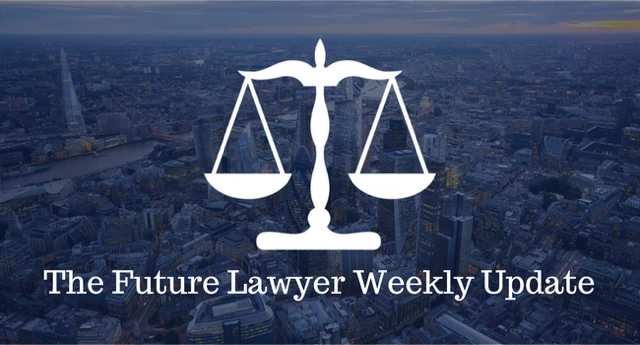
A Landmark case for Equal Pay Rights – Asda Stores Ltd v Brierley and others [UKSC 2019/0039]
August 19, 2024
The Future Lawyer Weekly Briefing – W/C 26th August 2024
August 23, 2024THE CONTRACTUAL DISCLOSURE FACILITY
The Contractual Disclosure Facility (CDF) is a mechanism introduced by HMRC to address serious tax fraud cases. It allows taxpayers to voluntarily disclose instances of tax evasion in exchange for reduced penalties and immunities from criminal prosecution.
The CDF is a key component of HMRC’s strategy to combat tax evasion. It balances enforcement with encouraging voluntary compliance.
Conception
The CDF was launched in 2012. Before its introduction, HMRC dealt with tax fraud cases through various means, including criminal investigations and civil settlements. However, these methods often proved cumbersome, resource-intensive, and ineffective in encouraging taxpayers to come forward voluntarily.
Its conception was influenced by the success of similar programs in other countries, such as the US Offshore Voluntary Disclosure Scheme, which aimed to bring offshore assets back into the tax net. Furthermore, the CDF was designed to be a more streamlined, user-friendly process that could expedite the resolution of tax fraud cases while maintaining the integrity of the tax system.
The CDF, in keeping with its intended simplicity, offers a simple choice: accept or reject the offer.
Accepting the offer means admitting to tax fraud, fully cooperating with HMRC, and agreeing to full disclosure. In return, HMRC guarantees that criminal prosecution will not be pursued. If, however, the offer is rejected, HMRC may proceed with a criminal investigation.
Uses
The CDF is primarily used by individuals and businesses who have committed serious tax fraud.
Serious tax fraud is defined as any deliberate attempt to mislead HMRC, such as underreporting income, over-claiming expenses, or hiding assets. The facility is not intended for simple errors or negligence, typically handled through other compliance measures.
The CDF process begins upon receipt of a letter from HMRC indicating that the recipient is suspected of serious tax fraud and offering the opportunity of disclosure under the CDF. The taxpayer has 60 days to respond, and if they accept the offer, they must submit an Online Disclosure within the same period, including basic details of the suspected tax fraud. After that, a full disclosure to HMRC is required within six months.
One key advantage of the CDF is that it allows taxpayers to avoid the potentially serious consequences of criminal prosecution. Instead, they are subject to civil penalties such as fines, which are often significantly lower than the fines that could be imposed following a criminal conviction. Moreover, taxpayers who fully cooperate with HMRC can benefit from reduced penalties based on the quality of their disclosure and cooperation.
Impact on society
Since its introduction, the CDF has encouraged many taxpayers to come forward and regularise their tax affairs, thereby increasing tax revenues and helping to level the playing field for honest taxpayers. By offering an alternative to criminal prosecution, the CDF has also helped to reduce the stigma surrounding tax fraud. This has led to more open discussions about tax compliance and taxpayers’ moral obligations, contributing to a broader cultural shift towards greater transparency and accountability in financial matters.
The CDF has also helped to change the public’s perception of tax fraud. By emphasising voluntary disclosure and cooperation, the facility has helped to humanise the issue of tax fraud, making it clear that it is not just the domain of hardened criminals but can involve ordinary individuals and businesses who have made poor decisions. This has helped to reduce the polarisation of opinions on tax fraud and foster a more nuanced understanding of the issue.
However, some have also criticised the CDF. Critics argue that it effectively allows wealthy individuals and businesses to buy their way out of criminal prosecution, thereby perpetuating inequality in the justice system. There are concerns that the facility may be perceived as too lenient, potentially undermining public confidence in the tax system.
Impact on the legal sector
The introduction of the CDF has had significant implications for the UK’s law sector, particularly in tax and criminal law. For tax advisors and legal professionals, the CDF has become essential in advising clients on managing their tax affairs and mitigating the risks associated with past non-compliance.
The CDF has increased demand for specialist tax advice as individuals and businesses seek to navigate the complex process of making a full disclosure to HMRC. This has created opportunities for law firms and tax advisors to develop expertise in this area and offer bespoke services to clients. It has also led to a niche market for CDF-related legal services, including preparing disclosure reports and negotiations with HMRC.
The CDF has presented a new dynamic for criminal lawyers in handling tax fraud cases. The facility has changed the calculus of advising clients to cooperate with HMRC or contest the allegations. The decision to accept or reject a CDF offer is critical, with significant legal and financial implications. Criminal lawyers must carefully assess the evidence against their clients, the likelihood of a successful defence, and the potential consequences of a criminal prosecution.
The CDF has also influenced how HMRC conducts investigations. By encouraging voluntary disclosure, the facility has allowed HMRC to allocate resources more efficiently, focusing its enforcement efforts on cases where voluntary compliance is not forthcoming. This has led to a more targeted approach to tax fraud investigations, emphasising high-risk areas and sophisticated evasion schemes.
Furthermore, the CDF has impacted the broader legal landscape, particularly regarding the relationship between civil and criminal law. The facility blurs the lines between these two areas, offering a hybrid approach that combines elements of both. This has raised interesting legal questions about the nature of tax fraud, the rights of taxpayers, and the appropriate balance between punishment and encouragement of compliance.
In conclusion, the CDF is a significant development in the UK’s approach to tackling tax fraud. It represents a pragmatic solution to the challenges of enforcing tax compliance in a complex and globalised economy. By offering taxpayers a pathway to disclosure and cooperation, the CDF has helped to increase tax revenues, promote fairness in the tax system, and change public attitudes towards tax fraud.
However, the facility is not without its controversies, particularly regarding its perceived leniency and the implications for equality in the justice system. For the UK’s law sector, the CDF has created new opportunities and challenges, reshaping how tax fraud cases are handled and developing specialised legal expertise.
As the UK continues to grapple with tax evasion, the CDF will likely remain a key tool in HMRC’s arsenal, evolving in response to changing circumstances and the lessons learned from its application. Its impact on society and the legal profession underscores the complex interplay between law, morality, and economics in taxation.
-
By Aqua Koroma



